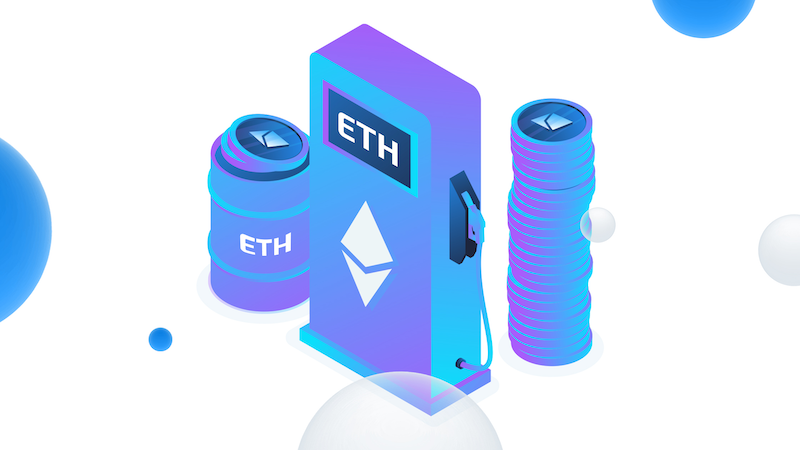Join Our Telegram channel to stay up to date on breaking news coverage
The landscape of Ethereum, the world’s second-largest blockchain, is constantly shifting. Recent events have spotlighted both the potential risks in major staking pool providers and the fluctuating supply dynamics of the network.
Ethereum co-founder, Vitalik Buterin, recently aired his apprehensions regarding the two leading liquid ETH staking pools, Lido and Rocket Pool. These platforms allow users to participate in ETH staking, enabling them to accrue rewards without needing to bind their funds directly in the staking contract. Lido provides its users with a derivative token termed “staked ETH” (stETH) to mirror the staked amount’s value. In contrast, Rocket Pool offers a system where individuals can stake ETH via a permissionless node by laying down 8 ETH.
While Lido and similar protocols have introduced protective layers, relying solely on a single defensive strategy may be insufficient.
Buterin expressed specific concerns about both these models. For Rocket Pool, he highlighted the potential vulnerability that could enable malicious actors to launch a 51% attack on the network, passing most of the incurred costs to its users. On the other hand, Lido’s approach, which involves its decentralized autonomous organization (DAO) whitelisting node operators, could result in a risky situation. If a single staking token becomes dominant, it might lead to a governance apparatus that, when targeted, could control a substantial segment of Ethereum’s validators.
Acknowledging certain preventative measures already in place, Buterin emphasized, “While Lido and similar protocols have introduced protective layers, relying solely on a single defensive strategy may be insufficient.” To counteract the risks of a single staking pool becoming overly dominant and thus posing a systemic threat, he suggested a short-term remedy: diversifying to multiple staking pool operators. Furthermore, Buterin believes that embedding features at the protocol’s level to diminish the repercussions of centralization might provide a solution. One such approach could be adjusting staking penalty rules, making trustless liquid staking more feasible.
Ethereum Gas Prices Significantly Down
On the supply front, Ethereum’s dynamics are evolving, with significant shifts observed in the network’s gas prices. Last year’s transition from proof-of-work to proof-of-stake notably slashed the issuance of ETH by a staggering 90%. Still, the once-touted “ultrasound money” concept has been challenged recently due to declining gas prices and reduced transaction volume.
A salient point of this evolution traces back to Ethereum’s EIP-1559 implementation in August 2021, introducing a fee-burning mechanism. Consequently, the Ethereum supply began correlating directly with gas prices. Presently, sending ETH entails a transaction fee of approximately $0.28. In contrast, a Uniswap trade stands at $2.76, showcasing a decline from its $4.17 mark in September.
When queried about the plummeting gas prices, Chris Martin, Amberdata’s research chief, attributed the drop to three main factors. Firstly, he praised the Ethereum Foundation’s emphasis on Ethereum 2.0, enhancing the network’s cost-effectiveness and security. He then spotlighted the rise of Layer-2 scaling solutions, which have effectively diverted substantial volume from the mainchain. Lastly, Martin alluded to the broader crypto sphere’s current narrative ambiguity, suggesting the market is in anticipation of the “next big phenomenon”.
Julio Barragan, from Blocknative, opined that the current gas situation is transient. He foresees a future where an uptick in volume would naturally escalate competition for block space, causing the network to readjust gas prices. Further complexities arise with the increasing adoption of ERC-4337, or account abstraction, aiming to make cryptocurrency wallets as user-friendly as email services. While Barragan acknowledges the allure of reduced fees potentially attracting more users and fostering on-chain activity, he also cautions that increased users might ultimately culminate in heightened network congestion.
As Ethereum continues to evolve, its stakeholders are tasked with navigating both the intricate staking landscape and the ever-shifting supply dynamics. The community’s ability to adapt and innovate will undoubtedly shape Ethereum’s future trajectory.
Related News
- The Evolving Landscape of Ethereum ETFs
- The Cooling Love Affair Between Institutional Investors and Ethereum
- Vitalik Buterin on Crypto Mistrust, SBF and the Future of AI
- Galaxy Digital Founder Says Bitcoin ETF ‘Essential’
Best Wallet - Diversify Your Crypto Portfolio
- Easy to Use, Feature-Driven Crypto Wallet
- Get Early Access to Upcoming Token ICOs
- Multi-Chain, Multi-Wallet, Non-Custodial
- Now On App Store, Google Play
- Stake To Earn Native Token $BEST
- 250,000+ Monthly Active Users
Join Our Telegram channel to stay up to date on breaking news coverage


